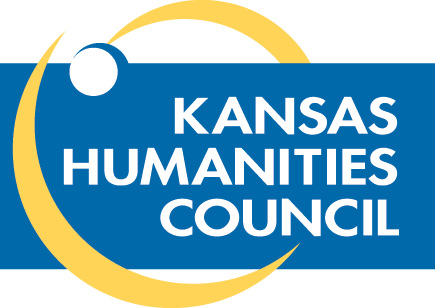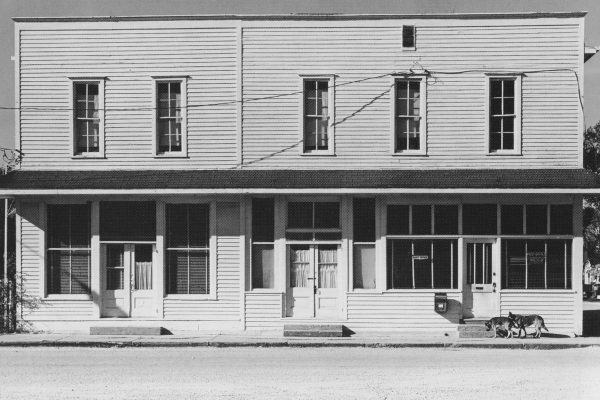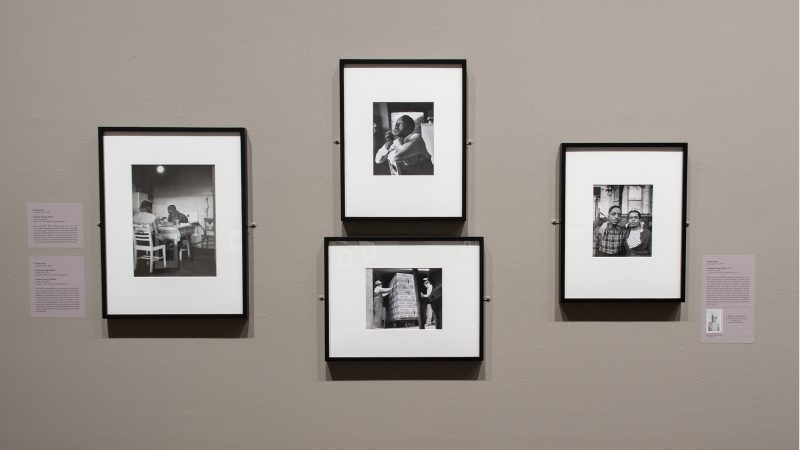
Freedom to Expand: Gordon Parks
January 30 - May 8, 2016
Louise and S.O. Beren Gallery
John W. and Mildred L. Graves Gallery
About This Exhibition
Gordon Parks: Back to Fort Scott
Freedom Now! Forgotten Photographs of the Civil Rights Struggle
Freedom to Expand: Gordon Parks presents two exceptional exhibitions related to Kansas native Gordon Parks, one of the most celebrated African American artists of his time. Gordon Parks: Back to Fort Scott organized by the Museum of Fine Arts, Boston, and Freedom Now! Forgotten Photographs of the Civil Rights Struggle organized by the Art, Design, and Architecture Museum at University of California–Santa Barbara, coincide with Parks photography exhibitions at Wichita State University’s Ulrich Museum of Art and The Kansas African American Museum.
Parks (1912–2006) rose beyond his humble, troubled beginnings. He was a groundbreaking American photographer, musician, poet, novelist, journalist, activist, and film director. Parks worked from 1948 to 1972 as a staff photographer at Life magazine, the most influential magazine of its time. Later, he continued to work with Life on a contract basis, as his film and writing projects flourished. He was the first African American photographer hired by this journal and regularly assigned projects exploring the contested race relations of the day. The images and stories he contributed are recognized for the humanizing perspective of African American cultural experience that he brought to mainstream America in the pages of Life.
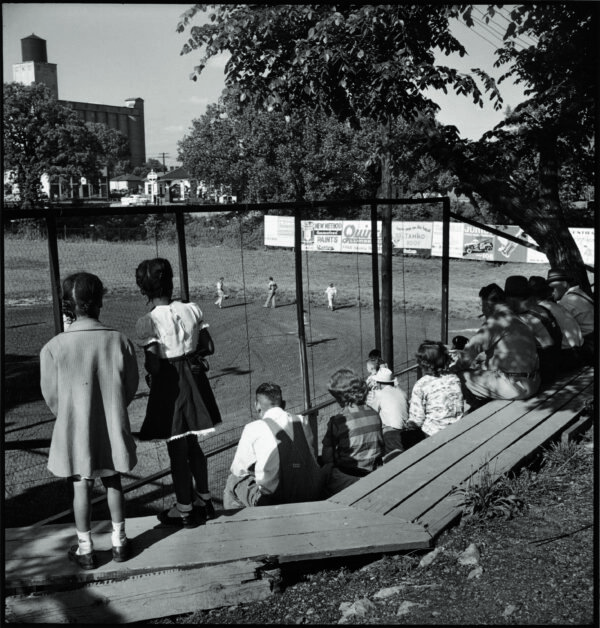
Gordon Parks, Untitled, Fort Scott, Kansas, 1950. Gelatin silver print, 14 x 11 inches. The Gordon Parks Foundation, Pleasantville, New York. Courtesy and copyright The Gordon Parks Foundation
Gordon Parks: Back to Fort Scott
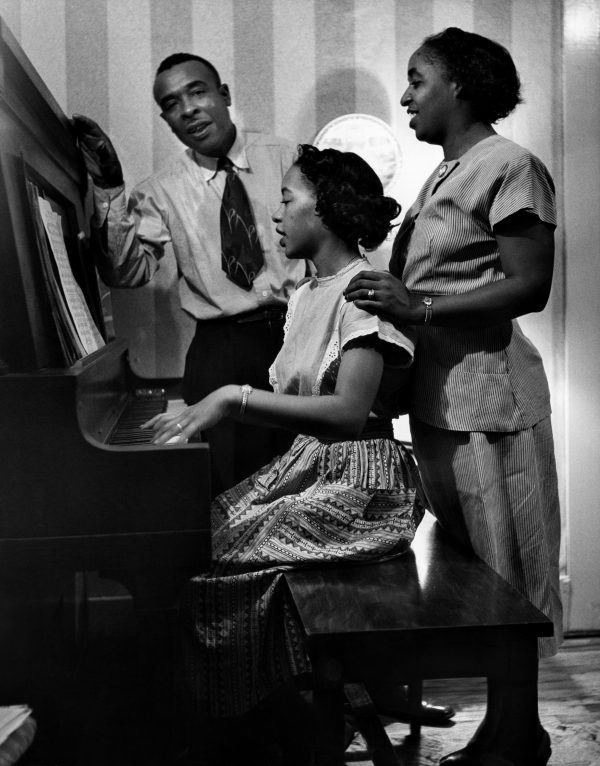
Gordon Parks, Untitled, Fort Scott, Kansas, 1950. Gelatin silver print, 13 1/2 x 10 1/2 inches. The Gordon Parks Foundation, Pleasantville, New York. Courtesy of and © The Gordon Parks Foundation
Gordon Parks created a body of work on his hometown of Fort Scott, Kansas–focusing on life under segregation. Fort Scott was the town that he had left in 1928, when at age 15 he found himself suddenly having to make his own way following his mother’s death. He used the 1950 Life assignment to revisit memories of his birthplace, many involving serious racial discrimination, and to reconnect with childhood friends, all of whom had attended the same grade school.
A visually rich and captivating series of images, Parks’ photographs were slated to appear in Life magazine in summer 1950 and again in April 1951, but the photo essay was never published.
This exhibition represents a rarely seen view of everyday lives of African Americans, years before the Civil Rights Movement. Importantly, the lives of Kansans masterfully captured by Parks serve as a model for this national cultural experience.
Gordon Parks: Back to Fort Scott was organized by the Museum of Fine Arts, Boston.
Freedom Now! Forgotten Photographs of the Civil Rights Struggle
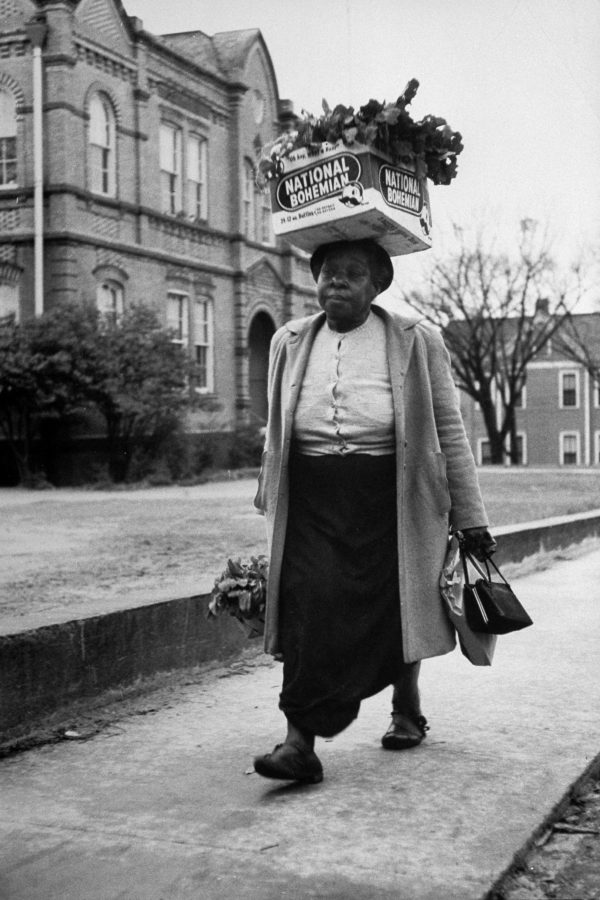
Don Cravens, Woman Boycotting Montgomery Buses, Montgomery, Alabama, December 1, 1955. Courtesy of Don Cravens and Time/Life Pictures/Getty Images
The exhibition presents pictures that recast the mental image Americans hold about the Civil Rights era. The project stems from the 2014 scholarly book by cultural and photo historian Martin A. Berger.
Photographers shot millions of pictures of the Civil Rights struggle from the late 1940s to early 1970s. Most Americans today recall a handful of images. In our collective memory, the Civil Rights Movement is remembered by dramatic scenes—protesters attacked by police dogs or black activists victimized by violence. In fact, there are other stories that other pictures tell. Blacks changed American discriminatory practices through their action, not their suffering. This exhibition presents forgotten photographs that illustrate the action, heroism, and strength of black activists in driving social change.
Freedom Now! Forgotten Photographs of the Civil Rights Struggle has been curated by Dr. Martin Berger, Professor of History of Art and Visual Culture, University of California-Santa Cruz, and is organized by the Art, Design, and Architecture Museum, University of California-Santa Barbara, generously supported by Sharon and Terry Bridges.
Community Collaboration
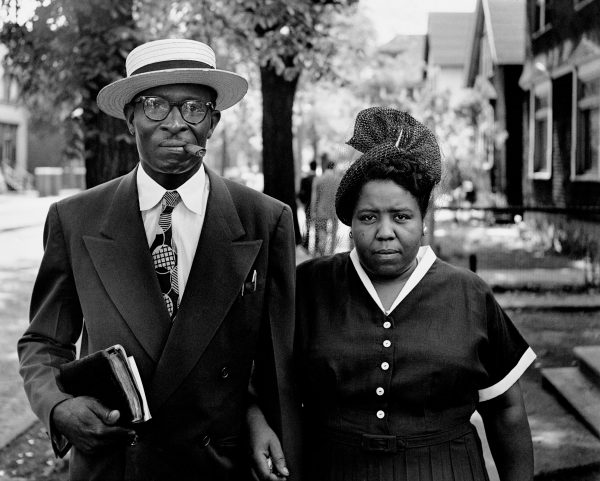
Gordon Parks, Husband and Wife, Sunday Morning, Detroit, Michigan, 1950. Gelatin silver print, 10 1/4 x 13 1/4 inches, Museum of Fine Arts Boston, Boston, Massachusetts, Gift of The Gordon Parks Foundation, Pleasantville, New York. Courtesy of and © The Gordon Parks Foundation
Freedom to Expand
Gordon Parks Community Symposium
WAM presents Freedom to Expand: Gordon Parks in a community-wide collaboration this winter. The Ulrich Museum of Art at Wichita State University will unveil its new cache of 125 photographs acquired from the Gordon Parks Foundation. The Kansas African American Museum will present a Gordon Parks exhibition of his Farm Securities Administration assignment in 1943 to photograph interracial camps in New York.
Friday, February 12 and Saturday, February 13, 2016
Ulrich Museum of Art at Wichita State University and Wichita Art Museum
Three Wichita museums are partnering this winter with simultaneous exhibitions devoted to Gordon Parks (1912–2006), a Kansas native and one of the most prolific and esteemed African American artists ofthe 20th century. In February, the Ulrich Museum of Art at Wichita State University and the Wichita Art Museum collaborate on a two-day forum of presentations and conversations with nationally recognized speakers and scholars. The symposium talks and gallery viewing on February 12 and 13 are free and open to the public. No reservations required.
Friday, February 12, 2016
Ulrich Museum of Art, Wichita State University
3 pm
Welcome, Bob Workman, director, Ulrich Museum of Art
3:15 pm
Jamal Cyrus on When Images are Deployed
Houston-based artist Jamal Cyrus will examine the political, psychological, and spiritual deployment of imagery within our society. Extending photography’s role beyond the selfie and the documentary, Cyrus will explore how the medium operates in a realm of powerful symbolic frameworks that control our movement and thought. He will address these concepts as they relate to his photographic, sculptural, and installation work both as an individual artist and with the collective Otabenga Jones & Associates.
4:15 pm
Julia Brown on Unfitting Images
Julia Brown, artist and assistant professor, George Washington University, will discuss her exhibition The Swim, on view at the Ulrich. Using her research into photographic documentation of the Civil Rights era—including Florida wade-in protests over beach segregation—Brown asks why certain images and events achieve iconic status for a time, a people, and a movement, while others are overlooked, buried, or forgotten.
5:15 pm
Reception and exhibition viewing
6 pm
Dr. John Edwin Mason on Visual Justice: Gordon Parks’ American Photographs
Mason is working on Gordon Parks and the American Democracy, a book about Parks’ Life magazine photo-essays on social justice and Parks’ books during the Civil Rights era, noting how these essays and books challenged Americans’ notions of citizenship and made Parks one of the era’s most significant interpreters of the black experience. Mason will illustrate how Parks worked to identify and collapse the rift between the promise and the reality of the “American dream.” Mason is Associate Professor of History and Associate Chair of the Department of History at the University of Virginia.
Saturday, February 13, 2016
Wichita Art Museum
2 pm
Welcome, Dr. Patricia McDonnell, director, Wichita Art Museum
2:15 pm
Dr. Galyn Vesey on Black Wichita, 1945–1958
A retired professor of public affairs, Vesey was one of the participants, as a teenager, in the Wichita Dockum Drugstore Sit-In in 1958. Vesey will talk about his current research for the book project Black Wichita: 1945–1958.
3 pm
Karen Haas on Gordon Parks in Kansas
Lane Curator of Photographs at the Museum of Fine Arts, Boston, Haas just curated the acclaimed exhibition Gordon Parks: Back to Fort Scott, now on view at WAM. Parks returned to his hometown in 1950—retracing his roots and examining troubled race relations before the Civil Rights Movement. Haas will examine the photographs and their meanings from this compelling photo narrative.
4 pm
Dr. Martin A. Berger on Images of the Civil Rights Struggle
Berger wrote the 2014 book and curated the exhibition Freedom Now! Forgotten Photographs of the Civil Rights Struggle, now on view at WAM. In collective memory, the Civil Rights Movement is remembered by dramatic scenes—protesters attacked by police dogs or black activists victimized by violence. Berger asserts that other pictures tell other stories. Blacks changed American discriminatory practices through their action, not their suffering. Professor of History of Art and Visual Culture at University of California– Santa Cruz, Berger will explore this crucial aspect of the Civil Rights era.
5 to 6 pm
Reception and exhibition viewing
Listening Statons
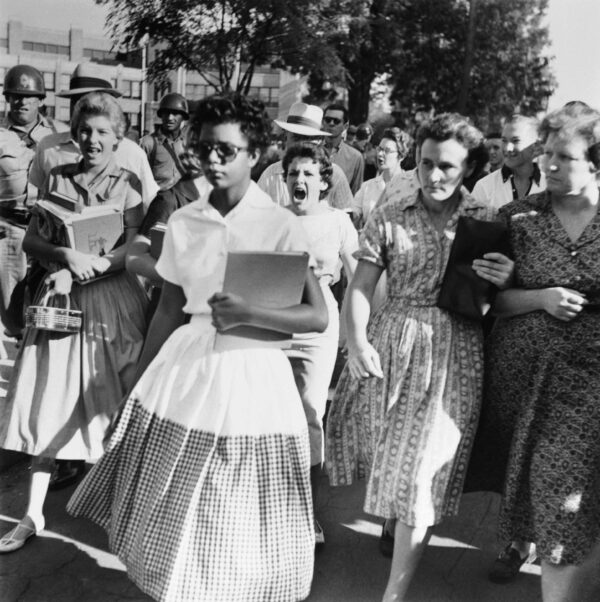
Pete Harris, Elizabeth Eckford, One of the Little Rock Nine, Pursued by Mob Outside Little Rock Central High School, Little Rock, Arkansas, September 4, 1957. 11 x 14 inches. ©Bettmann/CORBIS, reprinted 2013
Hear firsthand accounts by people depicted in historic photographs on view. Listen to relatives remember classmates portrayed by Gordon Parks.
“I was more concerned about what I would wear, whether we could finish my dress in time . . . ,” recalls Elizabeth Eckford. Eckford is one of the “Little Rock Nine,” a group of African American students who, in 1957, were the first black students to attend Little Rock Central High School in Little Rock, Arkansas. On her first day of school, Eckford arrived alone and was instantly surrounded by a mob of angry protestors. The door to the school had been barred by armed guards, which meant that Eckford had to walk back through the dangerous crowd on her way to safety.
“As I stepped out into the street, the people who had been across the street started surging forward behind me. So, I headed in the opposite direction to where there was another bus stop. Safety to me meant getting to that bus stop. It seemed like I sat there for a long time before the bus came. In the meantime, people were screaming behind me,” Eckford notes.
That lonely walk is captured in a photograph that is part of the exhibition Freedom Now! Forgotten Images of the Civil Rights Struggle. You can hear Eckford share her personal story at one of the listening stations developed for the exhibition. Hear the stories behind the photographs from people in the images for both Freedom Now! and Gordon Parks: Back to Fort Scott.
Exhibition Sponsors and Donors
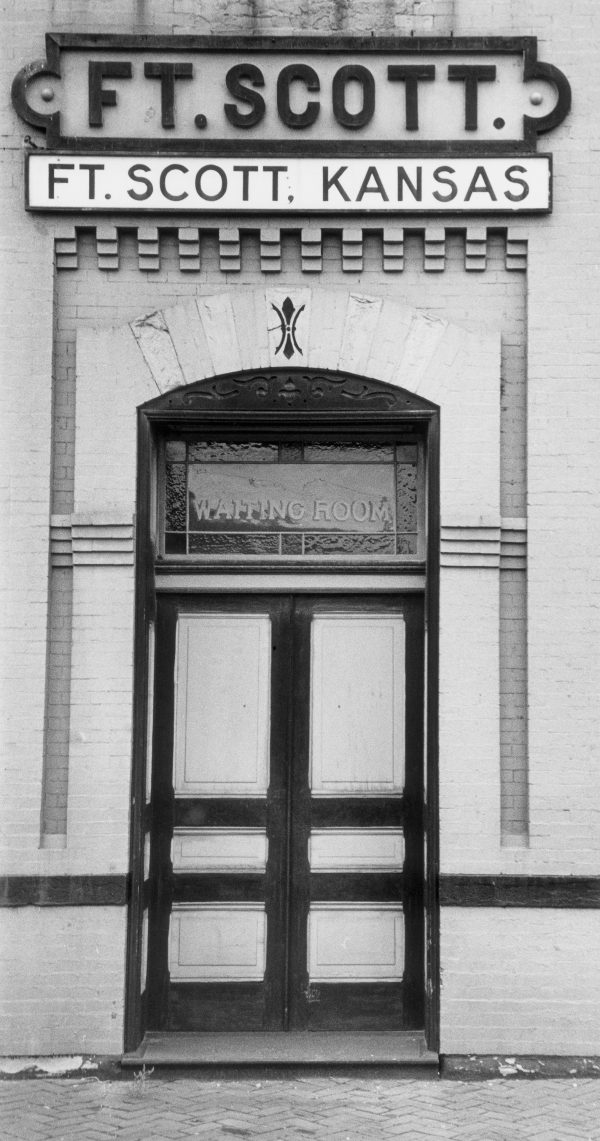
Gordon Parks, Frisco Railway Station, Fort Scott, Kansas, 1950. Gelatin silver print, 10 x 8 inches, The Gordon Parks Foundation, Pleasantville, New York. Courtesy and © The Gordon Parks Foundation
Gordon Parks: Back to Fort Scott was organized by the Museum of Fine Arts, Boston.
The Wichita presentation of Freedom to Expand: Gordon Parks is generously sponsored by Emprise Bank, Gridley Family Foundation, and the Kansas Humanities Council.
KMUW is media sponsor of Freedom to Expand: Gordon Parks
This exhibition is funded in part by the Kansas Humanities Council, a nonprofit cultural organization promoting understanding of the history, traditions, and ideas that shape our lives and build community.
All museum exhibitions receive generous sponsorship from the Friends of the Wichita Art Museum and the City of Wichita.


